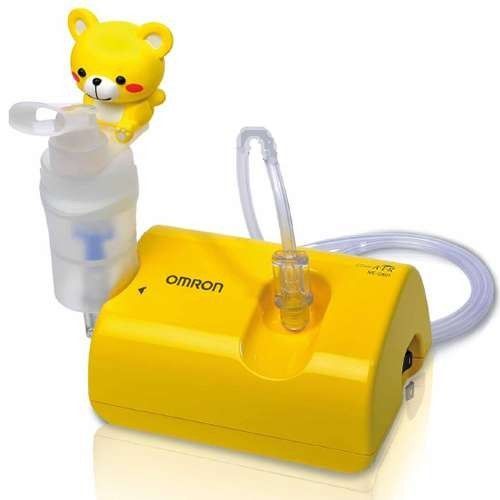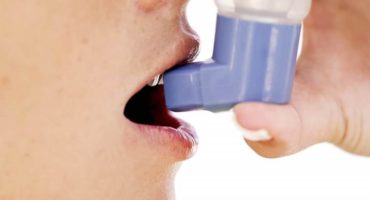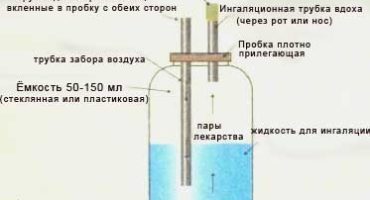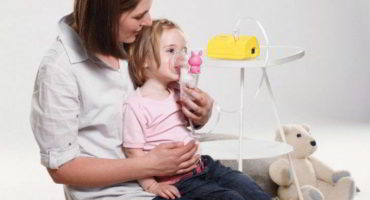With pathologies of the respiratory tract, inhalations are often prescribed. During the procedure, the drug, converted into a gaseous state, easily reaches not only the upper, but also the lower respiratory tract. In addition to steam inhalers known from previous years, nebulizers are currently actively used. How to use an inhaler nebulizer, we will consider in detail.
What is a nebulizer?
What is a nebulizer inhaler? This is an apparatus that turns a liquid drug into steam. The name of the device itself is derived from the Latin word meaning “cloud”. Depending on the type of inhaler, the size of the aerosol droplets may be 0.5-10 microns.

A nebulizer is used to treat respiratory diseases. Its action resembles a steam inhaler, but there is a significant difference. Why do I need a nebulizer nebulizer? During one procedure, it allows you to use several drugs.
Depending on how small particles are generated from the drug solution, the area of exposure depends. The most effective treatment is obtained, in which the particle sizes are the smallest. They can penetrate deep into the airways and have a therapeutic effect exactly where it is needed.
Important! The device can be used at home.
Types of devices
According to the principle of action, there are such types of nebulizer inhalers:
- membrane;
- ultrasound
- compressor

Compressor
The device is based on the principle of compression. In this case, the air stream enters a special container under high pressure. At the outlet of the device there is a small hole in which the components are split to the smallest particles. Most models allow you to adjust the settings so that the particle size can be either small or larger.

Compressor inhaler for children
Compressor-type inhalers are affordable. The disadvantages include the significant size and weight of the device itself. The principle of operation is based on connecting to the mains.
For your information! During operation, such a nebulizer emits significant noise.
Ultrasonic
This option is a recent development. The principle of operation is based on the use of ultrasonic waves to translate a liquid product into a vapor state.
The operation of the device is almost silent. The particle size obtained at the output is fixed. The cons include the significant cost of the device.
For your information! Not all drugs can be used in such an apparatus, since their active substances are destroyed by ultrasound.

Ultrasound machine
The following groups of medicines cannot be used in the device:
- antibiotics
- hormonal drugs;
- some mucolytics.
Membrane
This device is compact, works quietly and can be used for various medicines.The apparatus is based on the vibration of a special membrane, which is equipped with very small holes, passing through which the drug components are split. The disadvantage of this device is its high price.
Methods of drug delivery
There are several options for supplying a therapeutic solution, split into small particles.
Adjustable feed
Switching on is performed by pressing a button on the device. At the same time, an economical waste of money is observed. The use features include the need for regular pressing, which can be difficult during a child's session.
Continuous feed
In this case, the medication is supplied continuously. The mask enters the mask even when exhalation is performed. This leads to a waste of money. It is also possible that the medicine falls outside the mask and is inhaled by nearby people. Despite some disadvantages, this model is one of the most common.

For children, a continuous medication device is selected
Synchronized with breath feed
Such an opportunity occurs only in professional devices installed in medical institutions. The intake of medication is performed only on inhalation and does not occur upon exhalation. This method of dispensing the receipt of the drug is the most effective of the presented.
Indications for use of the device
The use of a nebulizer for the treatment of respiratory organs can not only accelerate recovery, but also reduce the likelihood of complications.
Using a nebulizer has the following effect:
- respiratory drainage;
- strengthening immunity;
- removal of inflammation;
- relief of edema of the respiratory organs;
- removal of spasm from the bronchi;
- against cough.

Children's device design
In this regard, a hardware inhaler is often prescribed for the following diagnoses:
- tonsillitis;
- rhinitis;
- tracheitis;
- bronchial asthma;
- bronchitis and others
Inhalers are effective devices that deliver drugs directly to the focus of the disease. The device has proven itself especially well for treating children, as it is not only effective, but also painless.

An ultrasound machine can treat even a sleeping baby
In what cases the inhaler is necessary:
- The need for a large dose of the drug.
- Impaired consciousness.
- Impossibility of prolonged (more than 4 seconds) breath holding.
- Cases where drug delivery to the lower respiratory tract is needed.
- The inability to use other methods of drug administration.
Also, the use of a nebulizer may be associated with the personal wishes of the patient, to whom this method of treatment is best suited.
Important! Before using a nebulizer for treatment, it is necessary to consult with your doctor.
Features of the design of the apparatus
The instrument may vary on different models. There are also some features associated with the manufacturer and the principle of operation of the device.
Capacity volume
The reservoir should allow to provide a therapeutic effect in a single session. Otherwise, you will have to interrupt to top up the solution.
Kit
The equipment may include several additional nozzles. For universal models, these can be nozzles designed separately for children and adults. Also included may be replacement parts.

Equipment
Performance
This parameter is responsible for the net volume received at the exit. A high value indicates the possibility of a longer and better procedure.
Accessibility
Depending on how convenient access to the camera is, the ease of processing is determined. Disinfection must be performed after each session.
Application rules
Nebulizer models differ depending on the type and manufacturer.In this regard, it is important to first study the instructions for a particular device in order to know exactly how to use a nebulizer inhaler.
Important! The procedure, if agreed with the doctor, can be carried out as a prophylaxis.
Basic Rules:
- For inhalation, the drug in the form of a suspension is combined with saline.
- It is forbidden to use crushed tablets in the inhalation process or apply the drug undiluted. Also, you can not use decoctions of herbs, oil preparations, cough syrups and some other substances.
- Do not use diluted water, even purified water.
- For one session, the child needs 3-6 ml of liquid.
- The solution is prepared immediately before use.
- After work, the device must be disassembled and washed.
- For each of the children in the family should have its own mask.
- The solution should be infused at room temperature.
Rules for use in the common cold
From a cold, an inhaler is most often prescribed for children. This procedure speeds up recovery and prevents complications that may result from the underlying disease.
Features of using an inhaler for children with a runny nose:
- It is recommended to undergo the procedure no earlier than an hour and a half after eating.
- The duration of exposure to steam should be no more than 10 minutes, should begin with 3-5 minutes.
- At the end of the treatment session, the device must be sanitized.
- If the child has nasal breathing impaired due to accumulated mucus, then the procedure is carried out through the mouth.
Important! During the manipulation, the child should sit still. To do this, you need to distract him with toys, fairy tales, hold on your hands or tell something.

Ultrasound machine
Drugs Used
Having a nebulizer, it is important to know the approaches to treatment using the main schemes:
- saline gives hydration to the mucous membranes, but does not have a therapeutic effect;
- medicines with Ambroxol act as an expectorant;
- vasoconstrictors (naphthyzine, etc.) help cope with a runny nose and sinusitis;
- at the initial stage of the disease and bacterial infection, an antiseptic (Dexan) helps;
- bronchodilator drugs are indicated for spasm of the bronchi (Salgim, Ventolin, etc.).
Recommendations for choosing a device
For those who are sure of the need to buy a nebulizer, it is advisable to take into account some important characteristics of the device:
- For a small child, you can buy a bright nebulizer, painted using children's themes. Such a device will scare the baby less.
- The kit should include nebulizers that are designed separately for the lower, and separately for the upper respiratory tract.
- If the device is designed for use by both adults and children, then the kit should contain several masks of various sizes.
- The convenience of the mask is of great importance, especially for babies.
- For most purposes, the compressor type of the device is suitable. If you need a road mobile option, then you can think about acquiring an ultrasonic model.
- Before buying, it is advisable to study the instructions in order to know which drugs can be used in a nebulizer and which ones are not.
Inhalations contribute to the rapid entry of medication into the respiratory tract. The nebulizer helps to have a local effect in the treatment of adults and children at home.



